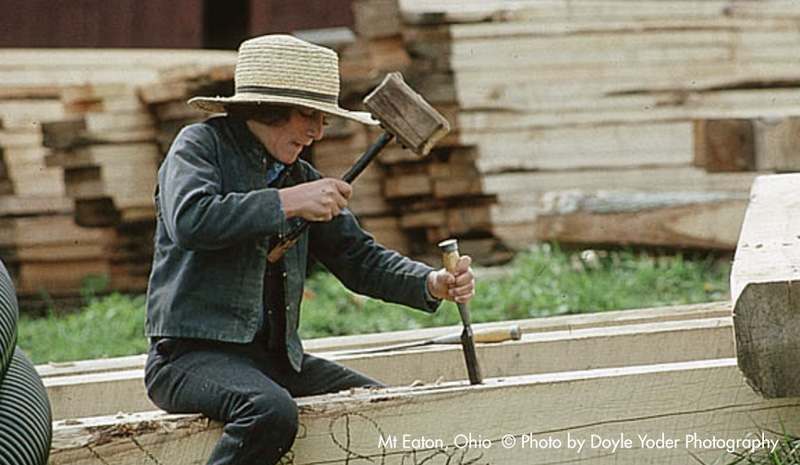Swartzentruber Amish: Square Haircuts and Flickering Lanterns
You may have noticed them alongside parked buggies,
selling handwoven baskets or fresh produce. Or perhaps you’ve passed their
homesteads with their dark red barns, spartan homes, and dirt lanes.
The most conservative sect of Amish in central Ohio, the
Swartzentrubers shun indoor plumbing, milking machines, and community phone
booths. Their settlements lie mostly along the back roads of southern Wayne
County and northern Holmes County.
Swartzentrubers
resist change more than most Amish groups. They refuse to adopt “fast
time” (daylight savings time) and depend largely on buggy transport, hiring passenger
vans only in emergencies. Wood stoves are used for cooking and heating,
and windmills and old fashioned hand pumps for securing water. While many Amish
families have started small businesses, Swartzentruber families hold fast to
farming and live largely off the land.
Among the fastest-growing Amish affiliations, the
Swartzentruber group has established more than 65 settlements in 12 states and
Ontario. Nineteen of those church districts are located in central Ohio.
Emerging somewhere between 1913 and 1920, this
ultraconservative group broke away from the main Amish due to disagreements
over the use of the
Bann, not unlike
their forefather Jacob Ammann who led a church split in 1693 over a shunning
issue. Their name originated from two early on bishops who had Swartzentruber
as their surnames.
Swartzentruber men can usually be identified by their
square haircuts, with hair hanging well below the ears, and their extra wide
hat brims and dark vests worn on top of navy or gray shirts. Swartzentruber
women typically wear large bonnets and dark dresses that reach the top of black,
high top shoes.
While Swartzentrubers maintain a wall of silence with
outsiders, they do interact with other Amish. For example, in neighborhoods
less populated by their own group, Swartzentruber families might send their
children to an Old Order Amish school although the level of education in their
own schools is more basic. They prefer to keep to themselves, however, and
rarely marry outside their order.
Discouraged from making too much money, Swartzentrubers
generally have a lower standard of living than more progressive Amish. If
members become too successful, they are encouraged to loan their money
interest-free to other members of the group to promote community and equality.
Farms are kept small and milk is sold at Grade B, since metal milk cans are
used instead of modern cooling systems. Families often sell handwoven baskets
or fresh produce to locals and tourists to make ends meet.
If you’re driving down State Route 241 between Mt. Eaton
and Mount Hope at night, there’s a good chance you’ll come up on a
Swartzentruber buggy. Orange safety triangles and bright electric lights are
considered worldly, as are buggy mirrors and windows. You’ll know a
Swartzentruber buggy by its dimly lit kerosene lanterns flickering in the
darkness.
Sources:
Amish
America blog:
Who are the Swartzentruber
Amish?
An Amish Paradox:
Diversity and Change in the World’s Largest Amish Community
, Charles E. Hurst and David
L. McConnell
The Riddle of Amish Culture, Donald B. Kraybill

